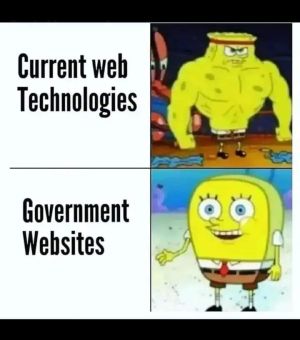Government Websites
Why Are Government Websites So Hard to Use (and Hackable)?
Government websites are supposed to be a resource for citizens, a tempting one-stop shop for information and access to services. But often, these websites are the exact opposite: confusing, frustrating, and even insecure. Here's a deeper look at the reasons why:
Security on a Budget Trap
While some government agencies have significant budgets, spending on cybersecurity might not be a top priority. This can lead to reliance on a strategy known as "Security by Obscurity." This essentially means hoping that because the inner workings of their systems are hidden, they'll be less vulnerable to attack. Unfortunately, in today's digital landscape, hackers are adept at finding and exploiting weaknesses in readily available technology. These vulnerabilities can be further amplified by the use of outdated authentication methods like simple username and password logins. Citizens often reuse these same credentials across multiple platforms, making them even more susceptible to compromise if a data breach occurs on another website.
The Insecure Inertia of Old Technology
Usability often seems like an afterthought for government websites. But lurking beneath the surface is another major security concern: outdated technology. Some government web applications still rely on:
- Internet Explorer (IE) compatibility: This outdated browser is no longer supported by Microsoft and leaves users vulnerable to known security holes.
- MD5 password hashing: This hashing algorithm, once considered secure, is now easily cracked by modern computing power.
These vulnerabilities create a prime target for hackers, potentially compromising sensitive citizen data or disrupting essential government services.
Usability as an Afterthought
Compounding the security issues is the user experience. Websites may be cluttered with information, have complex navigation structures, or use obscure terminology. This makes it difficult for people to find the information they need, discourages them from using the website, and ultimately, hinders citizen engagement with government services.
The Conspiracy Theory
The comment you shared also mentions a conspiracy theory - that governments intentionally make their websites difficult to navigate to prevent people from accessing information. While bureaucratic processes can certainly be slow and cumbersome, there's no evidence to suggest this is a deliberate attempt to disenfranchise citizens.
A Better Way Forward
Here are some ideas to improve government websites:
- Invest in cybersecurity: Government agencies need to prioritize cybersecurity, move beyond "Security by Obscurity," and allocate sufficient resources to protect their systems. This includes implementing strong authentication methods, regular security audits, and penetration testing.
- Focus on user experience: Websites should be designed with the user in mind, using clear language, simple navigation, and modern design principles.
- Embrace transparency: Government websites should be a transparent resource for citizens, providing easy access to information and services.
- Modernize Technology: Update outdated software and applications to ensure compatibility with current security standards. This includes migrating away from unsupported browsers like IE and implementing stronger password hashing algorithms.
- Prioritize Security Updates: A fear of breaking changes and downtime should not come at the expense of security. Regular security updates and patches are essential to defend against evolving cyber threats.
By making these improvements, government websites can become more user-friendly, secure, and ultimately, serve the needs of citizens in a more effective way.
